
Pruning plants is an important step in the garden. Not only to keep hedges in shape, but also to ensure that fruit trees bring a rich harvest and perennials remain floriferous. You should cut some plants in autumn before winter.
In a nutshell
- Autumn pruning can bring benefits
- Do not cut frost-sensitive plants in autumn
- Pruning is best done after the leaves have fallen
- Pay attention to bird protection in hedges, bushes and trees
Table of contents
- Benefits of fall pruning
- fruit trees
- Deciduous shrubs
- Evergreen shrubs
- Lawn
- roses and perennials
- frequently asked Questions
Benefits of fall pruning
If you already in the fall secateurs to cut the following plants, this brings a number of advantages:
- Wounds heal before winter
- evergreen shrubs stay in shape better despite possible snow loads
- with some fruit bushes harvest and cut done in one operation
- Removing dead or diseased plant parts prevents the spread of diseases and pests
- better assessment of the crown structure possible with deciduous trees
fruit trees
Blackberries (Rubus sect. rubus)
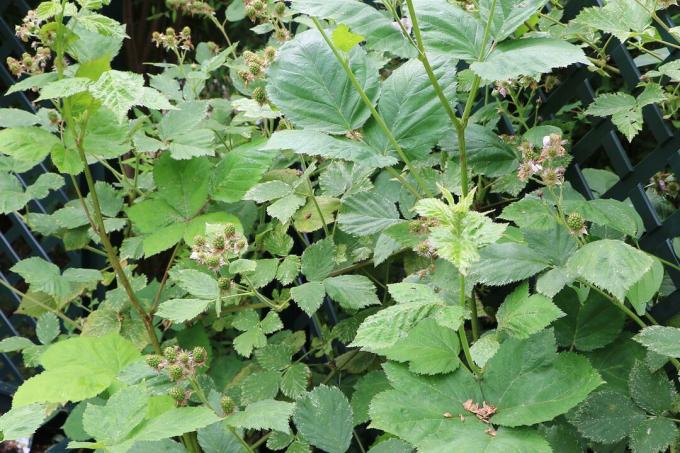
- Size: shoots up to 2 m long
- Location: sunny, well-drained, nutrient-rich soil; sufficient planting distance
- Care: mulch, keep moist, fertilize in spring
- cutting time: in the fall after harvest
- cutting measures: remove worn canes, shorten side shoots of young canes to about 30 cm
Blueberries (Vaccinium)
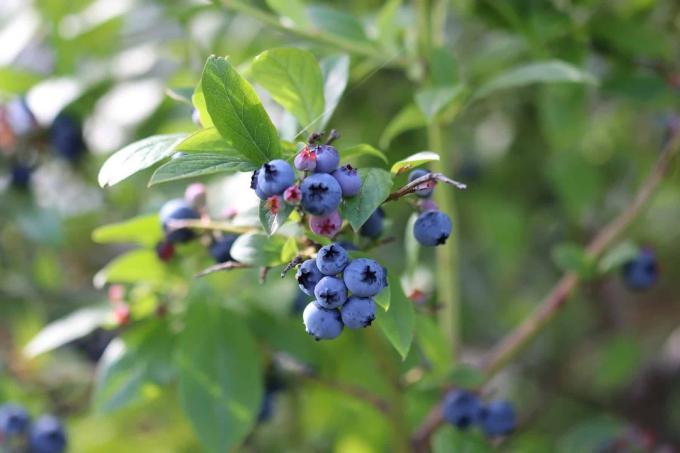
- Size: Forest blueberry, ground-covering shrub, cultivated blueberry up to 1.50 m in height
- Location: sunny; acidic, slightly moist soil
- Care: mulch with bark or softwood mulch, keep moist
- Cutting time: after or during the harvest
- cutting measures: Remove branches with the smallest berries and the strongest branching close to the ground
Raspberries (Rubus idaeus)
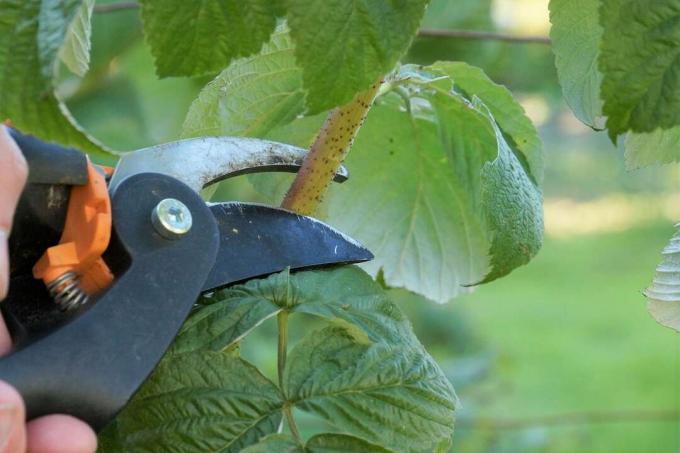
- Size: Rods grow up to 1.50 m high
- location: sunny; not too dry, nutrient-rich soil
- Care: definitely mulch, keep moist, in the spring fertilize
- Cutting time: after harvest
- cutting measures: cut off old canes just above the ground, young shoots above it if necessary trellis shorten
Currants (Ribes)

- Size: up to 2 m high depending on the species
- location: sunny; well-drained, nutrient-rich soil
- Care: mulch, in spring fertilizewhen the berries are ripe keep moist
- Cutting time: after harvest
- cutting measures: Blackcurrants bear fruit on one-year-old wood, remove old shoots; Bear red and white currants on perennial shoots, remove overgrown branches directly on the ground and thin out bushes vigorously
Gooseberries (Ribes uva-crispa)
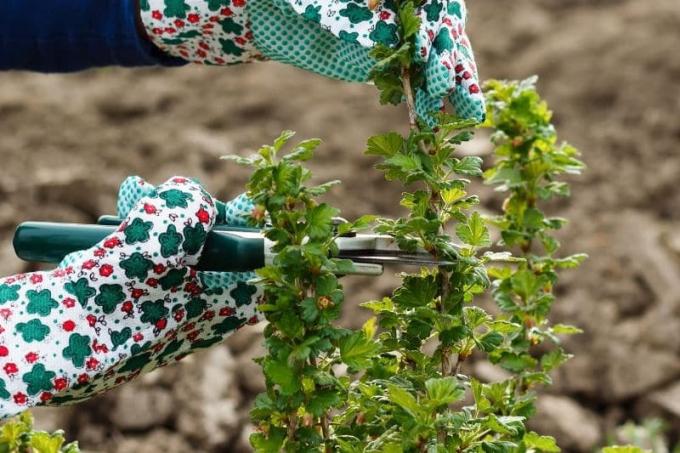
- Size: up to 1.50 m in height
- Location: partially shaded is better than too sunny; nutrient-rich, well-drained soil
- Care: mulch, fertilize in spring, keep moist
- Cutting time: autumn to winter
- cutting measures: cut a few old shoots close to the ground every year, leave young shoots in place, prune out too many shoots
Deciduous shrubs
Field maple (Acer campestre)

- Size: free-standing up to 15 m high, as a hedge or topiary as required
- Location: best sunny, semi-shade is tolerated; without special soil requirements
- Care: only young plants need water regularly and fertilizer in spring
- Pruning time: twice a year, spring and late summer to winter
- Pruning measures: remove diseased and dead shoots, otherwise shorten and shape the shoots as necessary
A notice: For all trees except fruit trees, larger pruning measures are not permitted between the beginning of March and the end of September for reasons of bird protection.
Hazelnut (Corylus avellana)

- Size: up to 7 m in height
- location: sunny; preferably nutrient-rich, not too dry and deep soil
- Care: mulch, fertilize in spring, water when dry
- When to cut: remove weak, young canes in summer, otherwise cut from autumn
- cutting measures: remove old shoots regularly, thin out the bush vigorously, put over-mature bushes on the stick, to do this remove all shoots close to the ground
privet (privet)
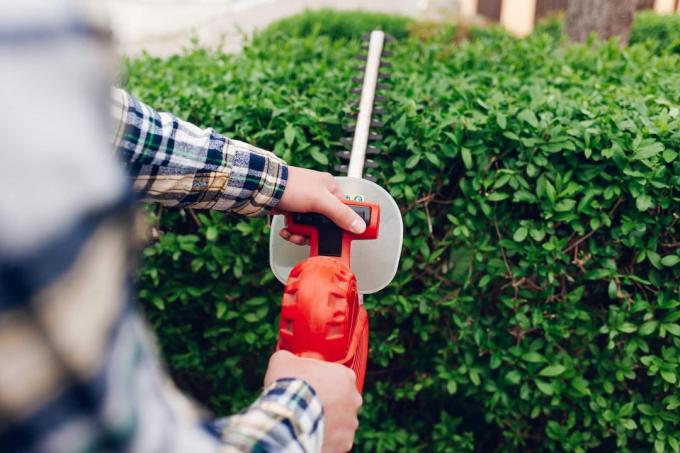
- Size: up to 5 m in height, depending on the intended use
- Location: sunny to shady, but then weaker growth; nutrient-rich, not too dry soil
- Care: mainly easy to care for, fertilize in spring if growth is weak
- Cutting time: from the end of August
- cutting measures: the harder the pruning, the denser the hedge will be, removing weak and dead shoots
European beech (Fagus sylvatica)
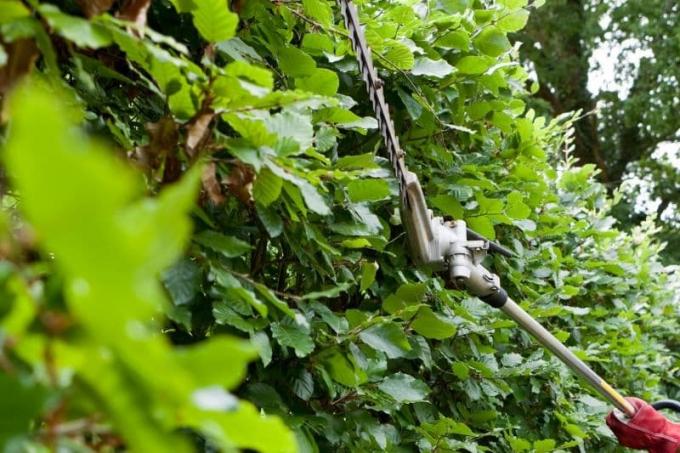
- Size: as a tree up to 30 m high, as Hedge or topiary as required
- Location: sunny to shady; Soil well drained and not too dry, rich in nutrients
- Care: do not let it dry out, otherwise easy to care for
- Pruning time: twice a year, in February and from summer to autumn
- cutting measures: bring into shape as required, very compatible with cuts
Evergreen shrubs
Occidental tree of life (Thuja occidentalis)
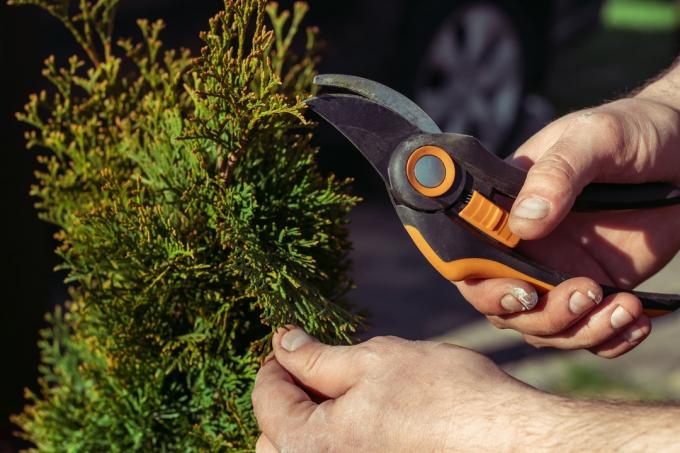
- Size: free-standing up to 15 m high, hedges as required
- Location: sunny to semi-shady; moist, nutrient-rich soil
- Care: do not let dry out, in spring fertilize, mulch
- Cutting time: from June, better only in autumn
- cutting measures: do not cut too deeply into the old wood, otherwise cut well; Choose a trapezoidal shape so that the hedge does not become bare at the bottom
Boxwood (Buxus)

- Size: as needed
- Location: not too sunny, protected from cold winds; not too dry but well-drained soil
- Care: do not let it dry out, regularly if cut frequently fertilize
- Cutting time: until September
- Cutting measures: Buchs can be cut into shape at any time, very compatible with cuts
Cherry laurel (Prunus laurocerasus)
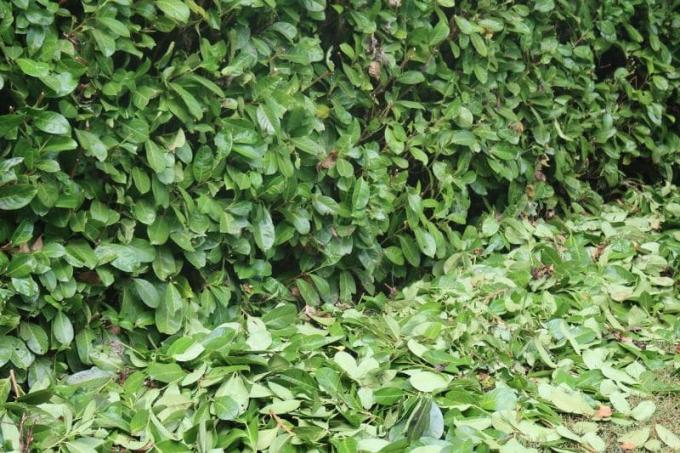
- Size: up to 4 m in height
- Location: tolerates the sun, also thrives in semi-shade; Soil should be permeable, moist and rich in nutrients
- Care: fertilize in spring, mulch, water when dry
- Cutting time: if cut once in June, cut twice in autumn
- cutting measures: remove diseased and dead shoots, otherwise cut into shape as required, very tolerant of pruning
Lawn
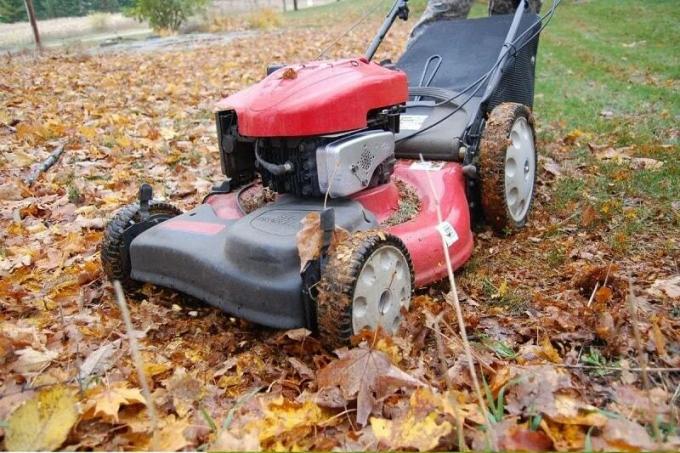
You should cut your lawn regularly until autumn. The last time he is cut, when temperatures drop into the single digits, which is the case in October depending on the weather. The grass then stops growing and it is no longer necessary to cut the lawn until spring. flower meadows do not need pruning in the fall to allow forming seeds to mature and spread.
roses and perennials
Perennials and roses are among the plants that you can prune in the fall, but it's often better to wait until spring to prune. Roses like to freeze back, so the shoots should be pulled back slightly before winter. Faded perennials provide shelter for insects during the cold season and the seeds serve birds as welcome fodder.

A notice: Cleaning perennials or roses in autumn is often unnecessary and has little effect on the next year's flowers.
frequently asked Questions
This includes plants that could be damaged in winter, such as the Buddleia, which freezes back in the event of frost, or ornamental grasses that need the old stalks as frost protection. The same applies peonies.
A good garden shears or hedge shears is sufficient for most cutting work. Pruning shears or a saw is required for thicker branches. The tool should be clean and very sharp to prevent the cut from spreading disease. Disinfecting the tools after each plant offers even more security.
If there is enough space in the garden, the clippings can be piled up in a corner. It then serves animals like hedgehogs or insects as winter protection or hiding places. Over time, the branches and twigs will rot. The leftovers can be used for compost or for Filling a raised bed be used. If you don't want to have the clippings in the garden, you can hand them in at the appropriate collection points.
